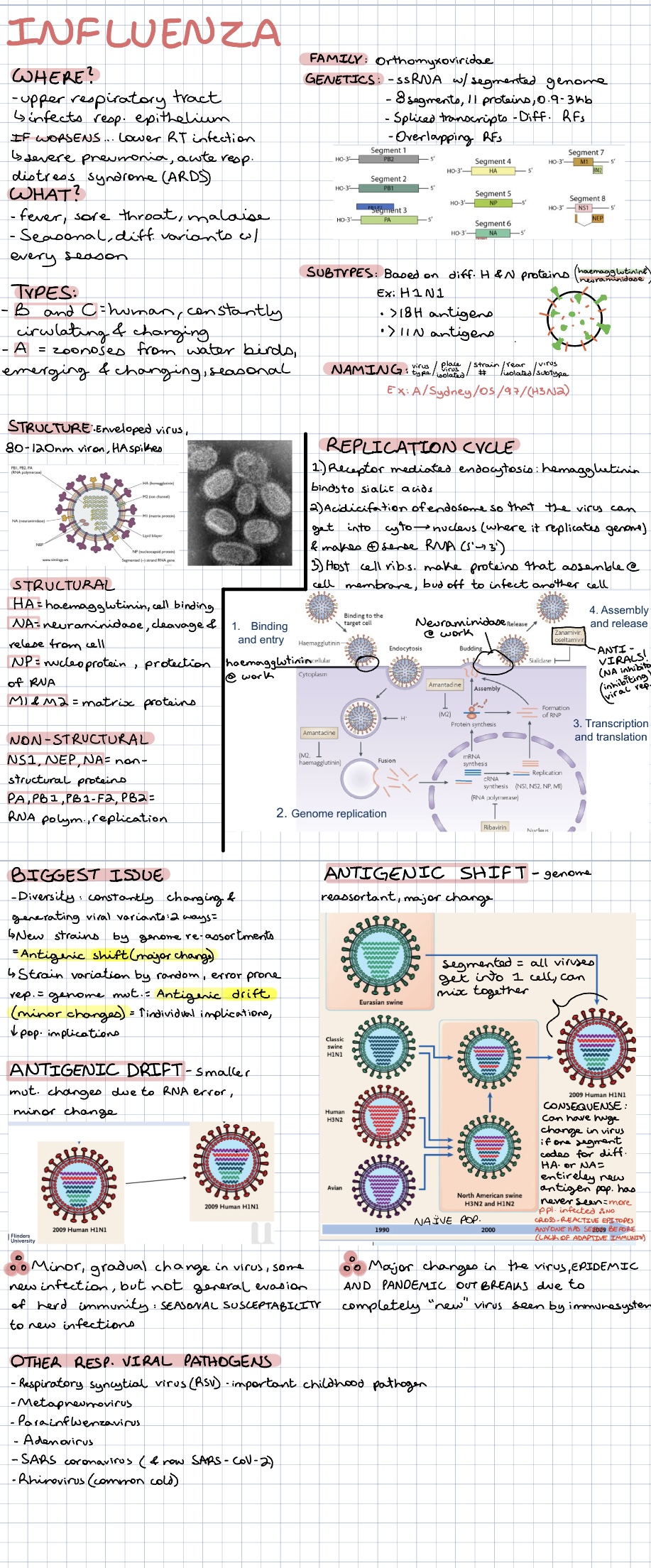Influenza virus characteristics and information.

Understand the Problem
The content in the image provides information on influenza, covering aspects such as its family classification, structure, replication cycle, antigenic shifts, and other related respiratory viral pathogens. It aims to summarize key features and characteristics of the influenza virus.
Answer
Influenza virus is an enveloped virus in the Orthomyxoviridae family with a segmented RNA genome, including types A, B, C, D. HA and NA proteins are key components. Variability arises from antigenic shift and drift.
The influenza virus is an enveloped virus belonging to the Orthomyxoviridae family, characterized by a segmented, single-stranded RNA genome. It exists in types A, B, C, and D. Key structural components include hemagglutinin (HA) and neuraminidase (NA) proteins. Antigenic shift and drift contribute to its variability.
Answer for screen readers
The influenza virus is an enveloped virus belonging to the Orthomyxoviridae family, characterized by a segmented, single-stranded RNA genome. It exists in types A, B, C, and D. Key structural components include hemagglutinin (HA) and neuraminidase (NA) proteins. Antigenic shift and drift contribute to its variability.
More Information
The influenza virus significantly impacts public health, causing seasonal flu epidemics and occasional pandemics. Understanding its structure and genetic variability is essential for developing effective vaccines and treatments.
Tips
Common mistakes include confusing antigenic shift and drift. Antigenic shift involves major changes and can lead to pandemics, while antigenic drift involves minor changes impacting seasonal flu variations.
Sources
- Types of Influenza Viruses - CDC - cdc.gov
- THE BIOLOGY OF INFLUENZA VIRUSES - PMC - NCBI - ncbi.nlm.nih.gov
- Influenza Virus - an overview | ScienceDirect Topics - sciencedirect.com
AI-generated content may contain errors. Please verify critical information